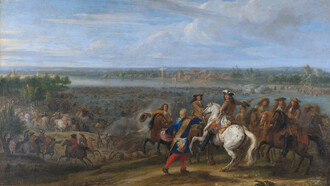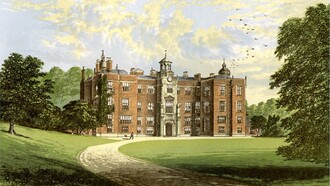The individuals who stay with their dead
The phrase Toraja comes from the Buginese language period of the Riaja, meaning "humans of the uplands". The place of Toraja is placed withinside the highlands of South Sulawesi. The fragmentation craze of decentralization brought about a break up of the previous district Kabupaten Tana Toraja into the regencies Toraja Utara (North Toraja) and Tana Toraja in 2008.
The populace numbers nearly 430,000 humans, overwhelmingly Torajans, however additionally Bugis, Makassar, and Javanese due to the migration of frequently landless Toraja because in the 1970s, a good large variety of Torajans stay outdoor Toraja.
In 2005, 88.7% of the Toraja populace had been Christians (56.5% Protestants and 32.2% Catholics), 7.3% had been Muslims and 4.0% had been Hindus.
The Dutch colonial rule
The highlands came under Dutch colonial rule in 1906. For administrative reasons, the Dutch divided the place into 32 Adat districts, each headed by a noble leader.
The inner fragmentation as such and the variations in Adat among those 32 districts are crucial to the Torajans' knowing themselves as an ethnic organization.
In the early 1900s, Dutch missionaries first laboured to transform Torajan highlanders to Christianity. When the Tana Toraja regency became similarly opened to the outdoor global withinside the 1970s.
The ‘Calvinist Dutch reformed mission installation’ was the primary project published in 1913 to create a buffer towards the lowland Islamic friends through Christianizing the upland “heathens”. The Christian project became unsuccessful at some point in colonial times, however, conversions accelerated unexpectedly after independence.
The concept of the humans dwelling in the highlands as certainly being “humans” slowly advanced under the impact of the converging forces of strategic political concerns of the ruling noble leaders, linguistic studies through the missionaries, a self-aware spiritual differentiation from the Islamic lowlanders, and colonial administrative measures. The population of the highlands in the end completely identified (themselves) as Torajans in the 1930s.
They belonged to the Austronesian circle of relatives
The Torajan language is the simplest spoken; no writing gadget exists. To explicit social and spiritual concepts, Torajans carve timber, calling it Pàssura (or the writing).
The carvings' motifs are generally taken from animals and flowers, and they're symbols of goodwill. For example, water flowers and animals, along with crabs, tadpoles, and water weeds, characterize fertility.
It is hard to make generalizations approximately the languages that make up an own circle of relatives as various as Austronesian. Very broadly, you can divide the Austronesian languages into 3 groups: Philippine-kind languages, Indonesian-kind languages, and publish-Indonesian-kind languages.
The unique function of the languages of Taiwan became first identified through André-Georges Haudricourt in 1965, who divided the Austronesian languages into 3 subgroups: Northern Austronesian - Formosan, Eastern Austronesian - Oceanic, and Western Austronesian (all final languages).
What they are famous for
Torajans are well-known for their problematic funeral rites, burial sites carved into rocky cliffs, large peaked-roof conventional homes referred to as 'tongkonan', and colourful timber carvings. Torajan funeral rites are predominant social events, generally attended by masses of humans and closing for numerous days.
There are 3 techniques for the burial of Torajan humans. The coffin, together with any possessions a good way to be wanted with-inside the afterlife, could be installed in a cave grave, a stone grave, or held on a cliff.
The rich are regularly buried in a stone grave, carved out of the rocky cliff, which generally charges numerous cash and takes a few months to complete. In a few places, the stone cave is sufficient to deal with the entire own circle of relatives. A wood-carved effigy, referred to as ‘tau tau’, is generally placed inside the cave and confronted down over the land. Unfortunately, those ‘tau tau’ had been centered through grave robbers for vintage collectors.
One specific kind of burial is to hold the coffin through ropes on a cliff face. This putting grave generally lasts for a few years, till the ropes rot and the coffin falls to the floor below. Coffins of infants and youngsters are hung from trees. The longer the deceased character stays at home, the extra the own circle of relatives can keep for the funeral — and the larger and extra highly-priced the rite can be.
Elaborate funeral ceremonies can hold for 12 days and consist of the sacrifices of dozens of buffalos and masses of pigs. Such ceremonies can value thousands of dollars. TV insurance of a Toraja funeral rite in 1978 valued at approximately $ 225,000.
The economy of Toraja
Most citizens of Tana Toraja Regency (ninety per cent) are subsistence agriculturalists. Rice, grown in terraced paddies, is planted and harvested by hand. Single metal-blade ploughs drawn through water buffalo or guys are nevertheless in use. Toraja farmers additionally develop maize, cassava, chillies, beans, yams, and potatoes. Cash vegetation consists of espresso (coffee) and cloves.
The Toraja additionally gathers snails, eels, and small fish from unplanted wet-rice fields. Domestic animals consist of pigs, chickens, and water buffalo, which are sacrificed on ritual occasions.
A variety of Toraja complements their profits through carving (for conventional or touristic purposes). Certain villages are recognized to specialize in especially crafts: knife forging, pottery making, mat making, and hat plaiting.
Festivals in Toraja
Toraja is an indigenous organization in the mountainous place of South Sulawesi. An annual cultural competition referred to as the “Lovely Toraja” showcases the ethnic organization's conventional songs and dances.
They generally carry out the kick-combating dances of Sisemba and Pagellu, the war dance Ma'tenten, a good way to be performed whilst a buffalo became sacrificed in the conventional rite.
Dancers will carry out a Mangaru dance (a dance that was originally composed to honour the community's leader). A warrior dance (referred to as “Màranding“) welcomed prominent visitors in a grand rite for the nobility. The dancers wear uniformed squaddies sporting a big guard and sword.
The Toraja’s oldest dance, Pàtirrà, is performed during the rite Rambu Tukà (an expression of gratitude to God). This dance is thought to have descended from the sky with Puang Matua, the almighty creator with-inside the Nabua rite. Dancers used guns crafted from bamboo whilst screaming usually to power away evil.















